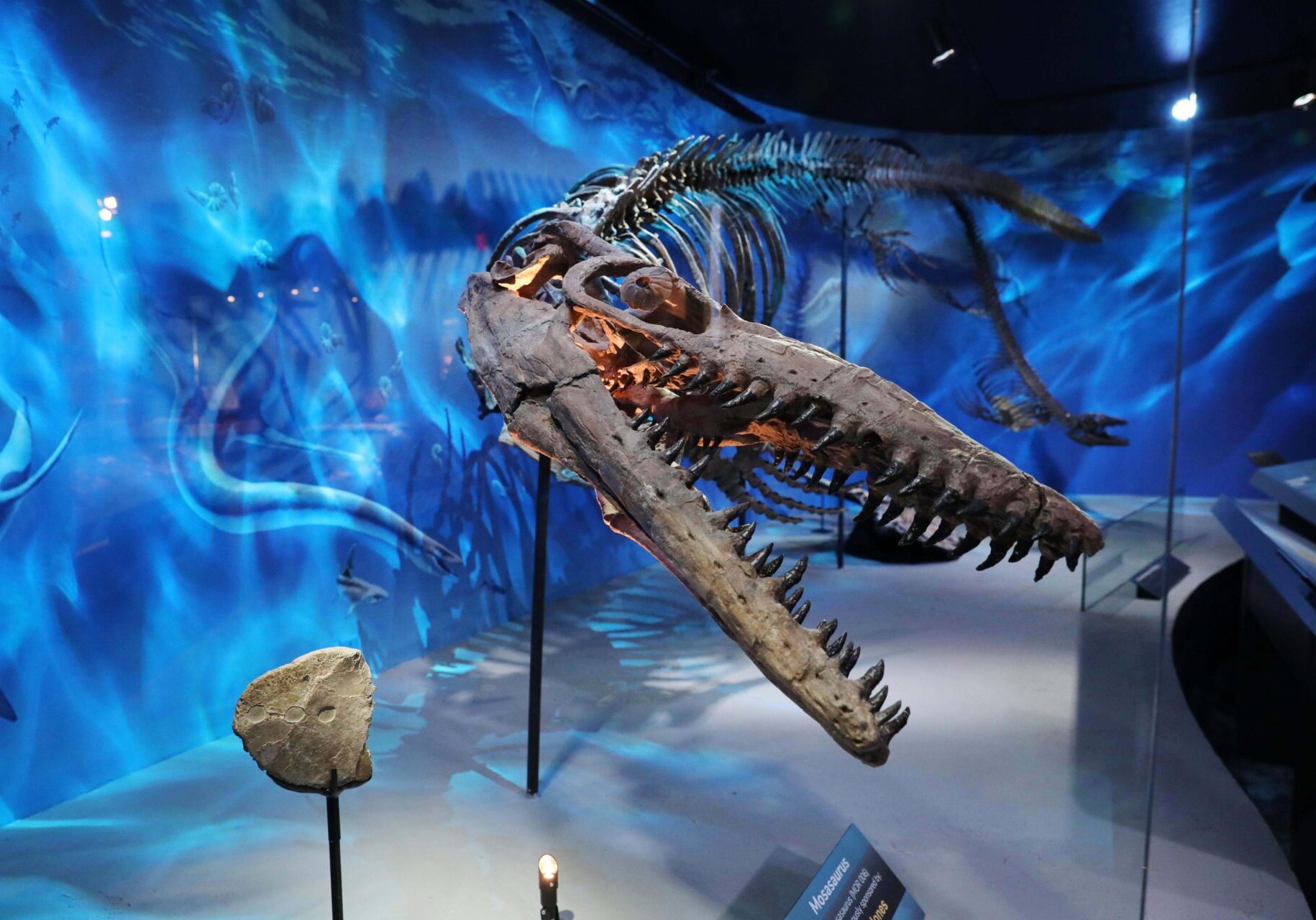Montana’s Motherly Dinosaur Takes Center Stage as Museum of the Rockies Opens New Exhibition
Museum of the Rockies' new exhibition showcases Montana's state fossil and the remarkable story of prehistoric parenting
By Staff Writer
Jun 30, 2025
BOZEMAN — When the Museum of the Rockies opens its new “Cretaceous Crossroads” exhibition to the public on July 2, visitors will come face-to-face with one of Montana’s most celebrated prehistoric residents: the Maiasaura, whose name literally means “good mother lizard.”
This marks the first major paleontology exhibition at the museum in over ten years, featuring specimens that are not just new to the Museum of the Rockies—they are new to science entirely. Some of these never-before-seen fossils are known only from Montana, making this exhibition a true scientific unveiling.
This remarkable dinosaur holds the distinction of being Montana’s official state fossil, a designation that speaks to both its significance in paleontological discovery and its deep connection to the Treasure State’s rich fossil heritage. The new exhibition places the Maiasaura front and center, featuring nesting specimens alongside dinosaur eggs and clutches that tell a compelling story of prehistoric care and social behavior.
A Story Written in Stone
What makes the Maiasaura so extraordinary isn’t just its size or appearance, but what its fossilized remains reveal about prehistoric life. The nesting sites discovered in Montana show clear evidence of organized behavior—eggs arranged in careful patterns, nests spaced at deliberate intervals, and evidence of repeated use of nesting grounds.
The fossil record shows these creatures didn’t simply lay eggs and abandon them. Instead, the evidence suggests a sophisticated system of care, with adult Maiasaura returning to tend their young. Fossilized baby Maiasaura found in and around nest sites show various stages of development, indicating that the young remained in the nesting area for extended periods.
Montana’s Fossil Treasure Trove
The Maiasaura specimens featured in “Cretaceous Crossroads” come from three of Montana’s famous fossil formations: the Two Medicine, Judith River, and Bearpaw formations, which scientists claim span what they estimate to be 72 to 82 million years ago. These formations have yielded not just individual fossils, but entire prehistoric ecosystems preserved in stone.
“This exhibition blends cutting-edge research, dynamic storytelling and hands‑on exploration to reveal how life on land and under the sea intersected during the Late Cretaceous,” said Scott Williams, the museum’s senior director of exhibitions.
Beyond the Bones
The new exhibition goes beyond simply displaying fossils. Visitors can explore microscope stations to examine bone structure and eggshell fragments up close, use augmented reality to see how these creatures might have moved and interacted, and investigate discovery drawers filled with specimens that showcase the variety of prehistoric life found in Montana.
The Maiasaura display includes both adult specimens and the delicate remains of juveniles, offering a complete picture of their life cycle. The fossilized eggs—some still containing embryonic remains—provide remarkable insights into prehistoric development and growth patterns.
A Window into the Past
What sets the Maiasaura apart in the fossil record is the sheer volume of evidence about their behavior. While many dinosaur species are known from scattered bones or individual specimens, the Maiasaura sites in Montana have yielded extensive nesting grounds with multiple generations of evidence.
This wealth of material allows scientists to piece together not just what these creatures looked like, but how they lived, how they cared for their young, and how they organized their communities. The evidence suggests complex social behaviors that challenge simplistic views of prehistoric life.
The Museum of the Rockies, affiliated with both Montana State University and the Smithsonian, continues to be a leader in Rocky Mountain paleontology research. The new “Cretaceous Crossroads” exhibition represents years of careful study and preparation, bringing together never-before-seen fossils with cutting-edge presentation technology.
For Montana residents and visitors alike, the exhibition offers a chance to connect with the state’s deep prehistoric heritage through the lens of one of its most fascinating ancient inhabitants—a creature whose story of care and community continues to captivate researchers and the public alike.
More details about the exhibition and visiting information can be found at the Museum of the Rockies website.
Don’t miss the week’s top Montana stories
Join readers across Montana who rely on WMN for independent reporting.
Unsubscribe anytime. Want to support WMN? Upgrade for $4/month →





